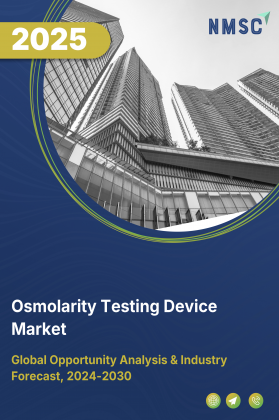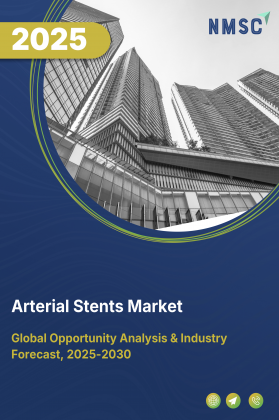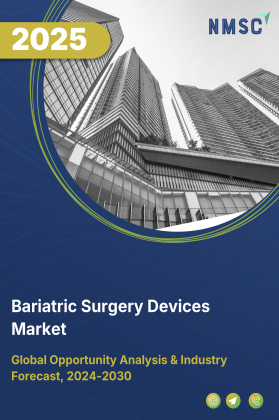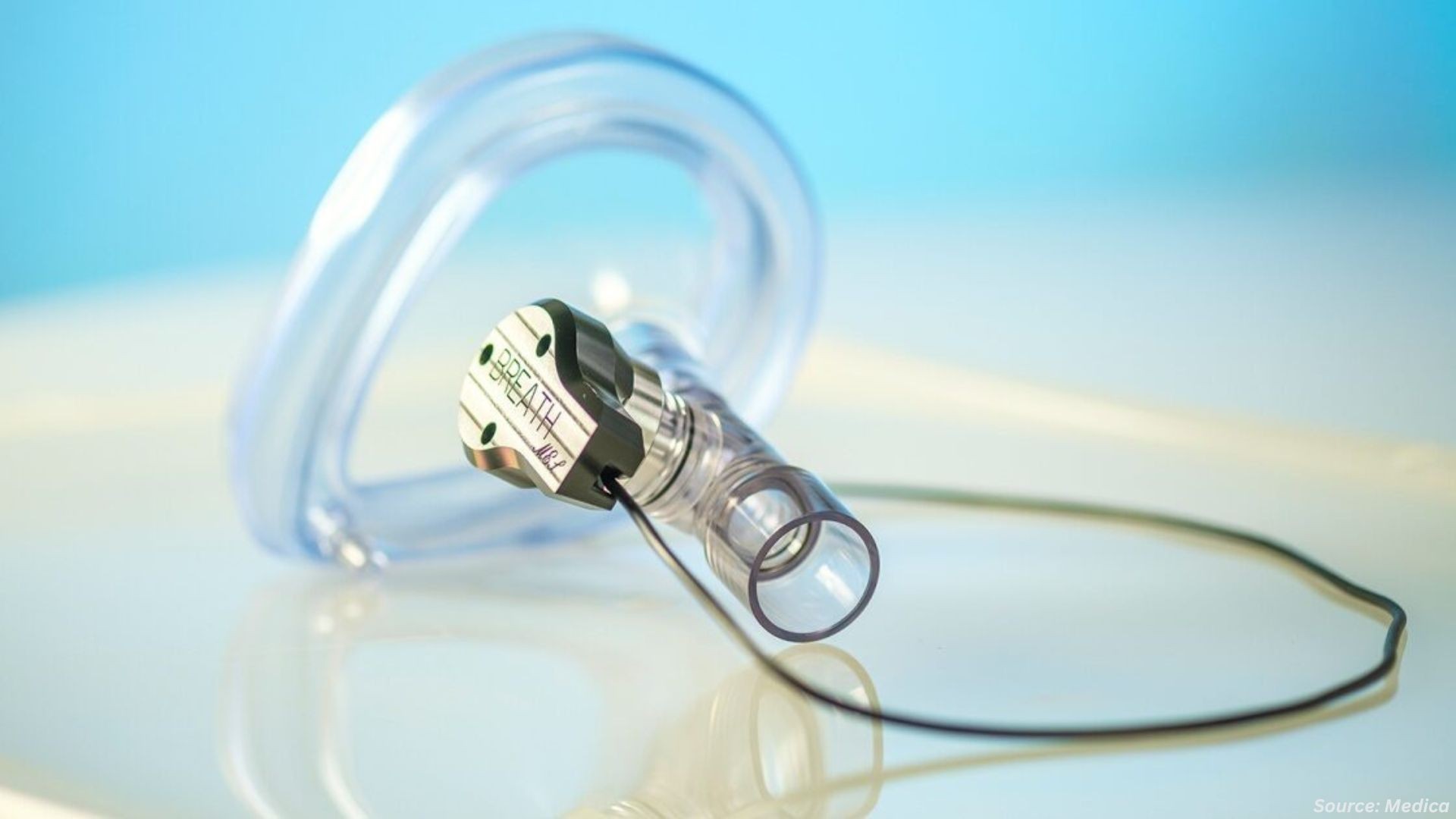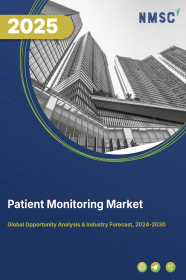
Patient Monitoring Market by Product (Cardiac Monitoring Devices, Blood Glucose Monitoring Systems, Hemodynamic/Pressure Monitoring Devices, Multi-parameter Monitoring Devices, Respiratory Monitoring Devices, Temperature Monitoring Devices, Fetal & Neonatal Monitoring Devices, Neuromonitoring Devices, Weight Monitoring Devices, and Other Devices), by Type (Conventional and Wireless), and Others - Global Opportunity Analysis and Industry Forecast, 2024–2030
Industry: Healthcare | Publish Date: 15-Aug-2025 | No of Pages: 180 | No. of Tables: 580 | No. of Figures: 573 | Format: PDF | Report Code : HC309
Market Definition
The global Patient Monitoring Market size was valued at USD 43.07 billion in 2023, and is predicted to reach USD 77.23 billion by 2030, with a CAGR of 8.7% from 2024 to 2030. Patient monitoring is a crucial aspect of modern healthcare that involves the continuous or intermittent observation of a patient's vital signs, physiological parameters, and overall health status throughout their medical care. This process employs various medical devices and technologies to collect, record, and analyze data, such as blood pressure, heart rate, oxygen saturation, respiratory rate, temperature, and others.
The patient monitoring market refers to the healthcare industry sector focused on the development, manufacturing, and distribution of devices and systems used to continuously or periodically track and record a patient's vital signs and health parameters. It plays a crucial role in a wide range of healthcare settings, ranging from hospitals and intensive care units to outpatient clinics and home healthcare. This will ensure that individuals receive the appropriate level of care tailored to their unique medical needs.
The Rising Prevalence of Chronic Diseases Drives the Market Growth
The rising prevalence of chronic diseases is increasing the demand for patient monitoring devices as it is a pivotal component of modern healthcare infrastructure. Healthcare providers recognize the importance f continuous health surveillance to manage and improve patient outcomes, driving the market growth effectively.
As an example, in April 2021, a World Health Organization (WHO) report indicated that non-communicable diseases (NCDs), commonly referred to as chronic illnesses, resulted in the annual deaths of 41 million individuals, accounting for 71% of the global fatalities. This alarming statistic underscores the pressing requirement for efficient patient monitoring solutions to confront the issues presented by these ailments.
The Integration of Patient Monitoring Systems with Electronic Health Records (EHRs) Propels the Growth of the Market
The integration of patient monitoring systems with electronic health records (EHRs) is driving the patient monitoring market growth, due to its ability to provide comprehensive patient data, streamline clinical workflows, enhance care coordination, and improve the accuracy and efficiency of healthcare delivery. This integration ensures an access to up-to-date patient information to healthcare providers, facilitating informed decision-making and personalized care while reducing administrative burdens.
The Rising Proportion of Elderly Individuals Propels the Market Growth
The rising aging population is propelling the growth of the patient monitoring market, due to the higher incidence of age-related health risks among elderly individuals. Patient monitoring devices are crucial in tracking and managing these conditions, ensuring timely interventions, and improving overall healthcare outcomes for this demographic. As the elderly population grows, the need for effective and continuous health monitoring is expected to increase, further fuelling the demand for patient monitoring solutions. According to the latest report published by the World Health Organization in 2022, the number of people above 60 reached 1.4 billion in 2020, which is anticipated to reach 2.1 billion by 2050.
The High Cost of Patient Monitoring Devices Restrains the Market Growth
The cost of patient monitoring equipment and systems in healthcare facilities is considerably high. This makes them less accessible for those with resource-limited settings. This factor is restraining the growth of the market.
AI and Machine Learning in Patient Monitoring Systems Create Ample Growth Opportunities
The integration of artificial intelligence (AI) and machine learning into patient monitoring systems to analyze vast amounts of patient data for early detection of health issues is expected to create ample opportunities in the coming years for the market. For instance, in March 2023, Zephyr AI, Inc. partnered with KangarooHealth, Inc., a healthcare technology company providing an AI-assisted turn-key remote patient monitoring platform and care management services. The partnership combined Zephyr AI’s industry-leading machine learning technology with KangarooHealth’s proprietary remote monitoring platform to work toward creating a best-in-class predictive solution for clinicians.
North America Holds a Major Share of the Patient Monitoring Market
North America holds the dominant share of the market, and is expected to continue its dominance during the forecast period. The key market players such as GE Healthcare, Abbott Laboratories, Honeywell International Inc., and others are adopting strategies, including product launches. This factor drives the market growth in the region. For instance, in April 2023, Honeywell introduced a real-time health monitoring system that records patients' vital signs in hospital and remote settings. This innovative solution utilizes advanced sensing technology through a skin patch to monitor vital signs continuously.
Moreover, the market is expanding as multinational telemedicine companies increasingly integrate patient monitoring solutions into their comprehensive healthcare ecosystems, particularly within this region. This progression is intricately connected with the patient monitoring market, as it promotes the uptake of monitoring devices and services to meet the surging need for integrated healthcare solutions.
For instance, in August 2022, Teladoc Health, the leader in the virtual healthcare industry, collaborated with a prominent remote patient monitoring platform Cloud DX. This collaboration is aimed at enhancing remote monitoring services for patients throughout Canada. Within this partnership, Cloud DX's existing remote patient monitoring services in Canada will receive improvements by incorporating Teladoc Health's virtual healthcare expertise.
Asia-Pacific Witnessed a Substantial Growth in the Patient Monitoring Market
Asia-Pacific is expected to steadily rise in the global market, due to the rising older population, which is prone to chronic diseases. According to a report published by the Population Reference Bureau in June 2023, Japan is experiencing a swift demographic shift, with approximately 28% of its population constituting elderly individuals.
Moreover, the rising government initiatives in the region have led to significant advancements in healthcare technology, particularly in patient monitoring. These initiatives have fostered the development and implementation of state-of-the-art patient monitoring systems and solutions, which, in turn, drive the growth of the market. For instance, in September 2023, the Government of India integrated the eSanjeevani telemedicine app to deliver quality healthcare services. The government also emphasized the development of technologies, such as telemedicine, AI-driven healthcare, robotics, and remote patient monitoring.
Competitive Landscape
Various market players operating in the patient monitoring industry include Medtronic Plc, Koninklijke Philips N.V., GE Healthcare, Siemens Healthineers, Nihon Kohden Corporation, Abbott Laboratories, Masimo Corporation, Hill-Rom Holdings, Inc., Biotronik SE & Co. KG, Honeywell International, Inc., and others.
These market players are adopting various strategies, such as product launches, to remain dominant in the patient monitoring market. For instance, in August 2023, GE HealthCare received 510(k) clearance from the U.S. Food and Drug Administration (FDA) for its innovative wireless and wearable monitoring solution known as Portrait Mobile. This cutting-edge platform enables real-time monitoring of a patient's essential health indicators and delivers personalized data visualization. It proves especially beneficial in facilitating patient mobility during crucial recovery periods, such as post-surgery or after transitioning from the intensive care unit.
Also, in June 2023, Royal Philips and Masimo jointly announced FDA clearance for the activation of SedLine Brain Function Monitoring, Regional Oximetry (O3), and CO? measurements within Philips Patient Monitors, specifically the IntelliVue MX750 and MX850 models. This recent expansion of the collaborative efforts between Masimo and Philips aims to empower healthcare professionals to make rapid and well-informed decisions without requiring supplementary monitoring devices.
Key Benefits
-
The report provides quantitative analysis and estimations of the patient monitoring market from 2024 to 2030, which assists in identifying the prevailing market opportunities.
-
The study comprises a deep-dive analysis of the patient monitoring market including the current and future trends to depict prevalent investment pockets in the market.
-
Information related to key drivers, restraints, and opportunities and their impact on the global market is provided in the report.
-
Competitive analysis of the players, along with their market share is provided in the report.
-
SWOT analysis and Porters Five Forces model is elaborated in the study.
-
Value chain analysis in the market study provides a clear picture of roles of stakeholders.
Patient Monitoring Market Key Segments
By Product
-
Cardiac Monitoring Devices
-
Mobile Cardiac Telemetry Monitors
-
Electrocardiogram (ECG) Devices
-
Implantable Loop Recorders
-
Event Monitors
-
Smart/Wearable ECG Monitors
-
-
Blood Glucose Monitoring Systems
-
Self-Monitoring Blood Glucose Systems
-
Continuous Glucose Monitoring Systems
-
-
Hemodynamic/Pressure Monitoring Devices
-
Hemodynamic Monitors
-
Blood Pressure Monitors
-
Disposables
-
-
Multi-Parameter Monitoring Devices
-
Low-Acuity Monitoring Device
-
Mid-Acuity Monitoring Devices
-
High-Acuity Monitoring Devices
-
-
Respiratory Monitoring Devices
-
Pulse Oximeters
-
Spirometers
-
Capnographs
-
Peak Flow Meters
-
-
Temperature Monitoring Device
-
Handheld Temperature Monitoring Devices
-
Table-Top Temperature Monitoring Devices
-
Wearable Continuous Monitoring Devices
-
Invasive Temperature Monitoring Devices
-
Smart Temperature Monitoring Devices
-
-
Fetal & Neonatal Monitoring Devices
-
Neonatal Monitoring Devices
-
Fetal Monitoring Devices
-
-
Neuromonitoring Devices
-
Electroencephalograph (EEG) Machines
-
Electromyography Machines
-
Cerebral Oximeter
-
Intracranial Pressure (ICP) Monitors
-
Magnetoencephalography (MEG) Machines
-
Transcranial Doppler (TCD) Machines
-
-
Weight Monitoring Devices
-
Digital
-
Analog
-
-
Others Devices
By Type
-
Conventional
-
Wireless
By End User
-
Home Healthcare
-
Hospitals & Clinics
-
Others
By Region
-
North America
-
The U.S
-
Canada
-
Mexico
-
-
Europe
-
The U.K.
-
Germany
-
France
-
Italy
-
Spain
-
Denmark
-
Netherlands
-
Finland
-
Sweden
-
Norway
-
Russia
-
Rest of Europe
-
-
Asia-Pacific
-
China
-
Japan
-
India
-
South Korea
-
Australia
-
Indonesia
-
Singapore
-
Taiwan
-
Thailand
-
Rest of Asia-Pacific
-
-
Rest of the World (RoW)
-
Latin America
-
Middle East
-
Africa
-
Report Scope and Segmentation:
|
Parameters |
Details |
|
Market Size in 2023 |
USD 43.07 Billion |
|
Revenue Forecast in 2030 |
USD 77.23 Billion |
|
Revenue Growth Rate |
CAGR of 8.7% from 2024 to 2030 |
|
Analysis Period |
2023–2030 |
|
Base Year Considered |
2023 |
|
Forecast Period |
2024–2030 |
|
Market Size Estimation |
Billion (USD) |
|
Growth Factors |
The rising prevalence of chronic diseases The integration of patient monitoring systems with electronic health records (EHRs) The rising proportion of elderly individuals |
|
Countries Covered |
28 |
|
Companies Profiled |
10 |
|
Market Share |
Available for 10 companies |
|
Customization Scope |
Free customization (equivalent up to 80 working hours of analysts) after purchase. Addition or alteration to country, regional, and segment scope. |
|
Pricing and Purchase Options |
Avail customized purchase options to meet your exact research needs. |
Key Players
-
Medtronic Plc
-
Koninklijke Philips N.V.
-
GE Healthcare
-
Siemens Healthineers
-
Nihon Kohden Corporation
-
Abbott Laboratories
-
Masimo Corporation
-
Hill-Rom Holdings, Inc.
-
Biotronik SE & Co. KG
-
Honeywell International, Inc.




















 Speak to Our Analyst
Speak to Our Analyst



